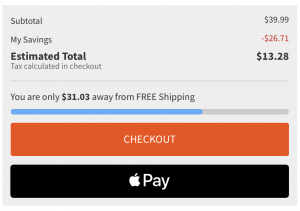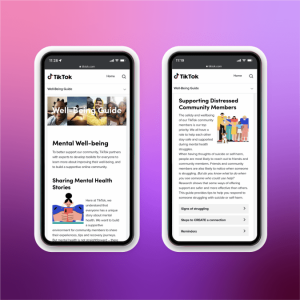Marketers are keen to deliver better customer experiences, but it takes time and a smart strategy. Columnist Dayle Hall shares four things you can do to make it happen.

Marketers have a lot of different priorities these days. One thing that many of us have in common, however, is that we’re constantly seeking out ways to deliver better customer experiences across all touch points, from traditional to digital.
If you find yourself nodding in agreement, the good news is, you’re in good company. About 90 percent of brands surveyed by Gartner have said they plan to compete this year primarily on the basis of digital customer experience alone.
Think about that for a moment. The vast majority of marketers today realize that the best way to differentiate their brands in the future is by delivering better customer experiences.
In fact, Gartner also has projected that by 2020, more than 40 percent of digital analytics-related projects will relate to an aspect of customer experience. So, if you’ve already jumped on the “digital customer experience” bandwagon — even if only in theory — you might as well consider yourself ahead of the curve.
The reality is that great digital customer experiences don’t happen overnight. This honestly shouldn’t come as a surprise. A lot takes place between the moment you start talking and strategizing about great digital customer experiences and the point you actually begin delivering on them.
And as much as we’d like to think that the end-user experience is the driving force behind this entire operation, I’m going to burst that bubble: It actually all starts with you.
Based on findings from the SiriusDecisions 2017 Global CMO Study, many top marketers were found to be grappling with a few barriers to success: insufficient processes to measure marketing’s contribution (25 percent); insufficient data to measure marketing’s contribution (18 percent); and measurement not being tied to broader business objectives (16 percent).
Here’s why this is important. Creating great digital customer experiences means that all the tactics a brand uses to target, reach, engage and eventually convert people into actual customers must add up to something much bigger than marketing alone. It’s not just marketing’s role to create a great experience for customers; everyone in a business plays a big part in bringing this to life.
And since marketers tend to lead the digital customer experience charge, we oftentimes have no choice but to be the stewards — or the “broken record” — for putting the customer’s wants, needs and expectations at the heart of every business decision made, within and beyond the marketing organization.
But if you don’t get over the hurdle of creating the connective tissue between marketing tactics and broader business objectives, you’re wasting your time. (Great digital customers experiences don’t happen in a vacuum either.)
Sure, every business is different; I would never suggest that there’s only one recipe for success for building a well-oiled digital customer experience machine. However, there are a few general best practices that can get you moving in the right direction, faster. (Right now, you probably feel like you’ve heard these all before, but please hear me out!)
1. Empower internal teams
The digital customer experiences your brand creates are only as good as the people behind the scenes creating them. Unfortunately, based on the SiriusDecisions study, a vast majority of businesses have not made an adequate investment in training or skills development.
This is a big deal. While strategy and goals alignment may come from the top down, delivering on great digital customer experiences comes from the bottom up. It’s your responsibility to ensure that internal teams can operate effectively, efficiently and collaboratively.
Part of this involves training. Part of this involves investing in tools, technologies and platforms that can streamline and inform your go-to-market process. Part of this also involves creating transparency around how internal teams contribute, even at the tactical level, to a business’s overall success.
Long story short — if you don’t set up your team for success, how can you expect them to succeed? (You can’t!) While this might seem obvious, it’s oftentimes overlooked.
2. Know your customers
When we talk about digital customer experiences, there’s something very important that we can never forget about: the customer. It’s easy to get caught up in creating an experience — especially one we believe to be truly fantastic. After all, that’s the fun part.
But think about it this way: What’s the point of creating an experience that doesn’t engage or interest your target consumers? There’s no point, really.
Fortunately, thanks to the wealth of data we now all have at our fingertips, we’re able to understand what motivates consumers to action better than ever before. Not only does all this data help us identify the digital (buying or decision-making) behaviors of our most desired customers, but it also allows us to leverage these insights to create user profiles that make streamlining and scaling our customer outreach efforts a lot easier.
The truth is that without a keen understanding of your customers — their wants, needs, expectations, and beyond — it’s almost impossible to create truly relevant digital customer experiences for them.
3. Use technology wisely and anticipate customer needs
So, here’s where “getting to know” your customers can get a little tricky. They are living and breathing human beings, which means they are likely to change over time.
To think that what your customers want or need one day will be the same five years down the road is, well, not realistic at all. Your customers are constantly changing; therefore, the way you engage with them needs to change as well.
The digital age that we live in makes this even more of a reality for marketers. Not only is technology evolving faster than ever before, but the way we use technology to shape, change or influence consumer behavior is a bit of a moving target, too.
This all basically means that knowing your customers, unfortunately, isn’t enough; to create content, communications experiences that will resonate with them, you have to understand the “how” and “why” they operate in the ways they do.
So, how are many marketers responding to ever-changing customer needs? Citing the SiriusDecisions study once again, they are deciding to invest more in things like interactive content or visual storytelling (13 percent), mobile marketing (11 percent), and customer communities (11 percent).
And while these are only a few of the tech-leaning trends rising to the surface now, it’s safe to say that there will likely be a whole new slew of tactics that we’ll have to be mindful of in, say, six months’ time. For this reason, we have to be nimble. We have to adapt — and quickly — to the digital marketing ecosystem as it continues to evolve around us.
4. Be ready to help
Creating a great digital customer experience now involves a lot of give and take. More often, we’re seeing consumers flock to digital, especially their mobile devices, to engage with brands directly whenever they have a question, a concern or even a complaint. Brands have to be ready to respond — and fast!
As a result of this, social customer care is quickly becoming a much bigger part of the digital marketing puzzle. And for good reason. About one-third of consumers will visit a brand’s website, blog or social channels first whenever they need help, according to our survey results.
Therefore, brands must be present on all the channels consumers use to get help when they need it most and, preferably, be able to provide a response in real time. Consumers expect it. Brands must deliver. Social customer care is the path forward.
And while this might not necessarily be the first thing that comes to mind when you think about “digital customer experiences,” it’s important to remember that customer support is just as much of an “experience” as it is the way you present and communicate your brand’s unique story and value proposition via your website, community, social media and beyond.
I know that this all sounds a lot easier said than done. That’s why I started out by saying that great customer experiences don’t happen overnight.
By keeping a few important things in mind as you build your digital marketing strategies — empowering internal teams, knowing your customers, adapting to changing customer needs, and being ready to help at all times and across all channels — you will be better positioned to create outstanding digital customer experiences that inspire loyalty, drive growth and align to broader business objectives.
Opinions expressed in this article are those of the guest author and not necessarily Marketing Land. Staff authors are listed here.
Marketing Land – Internet Marketing News, Strategies & Tips
(73)






